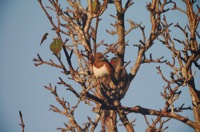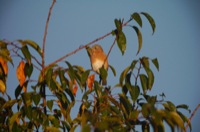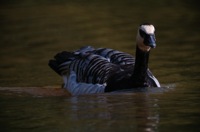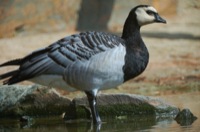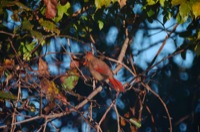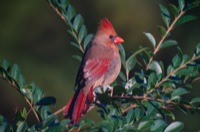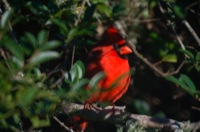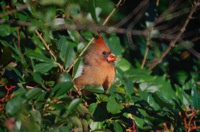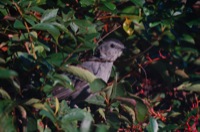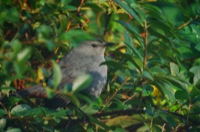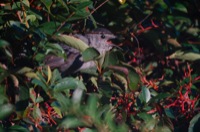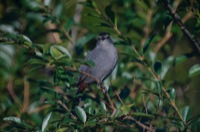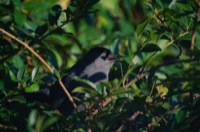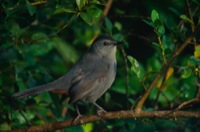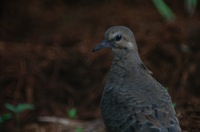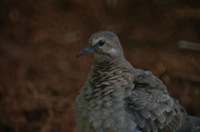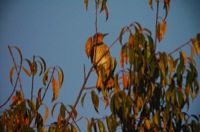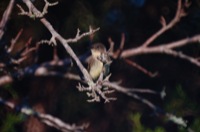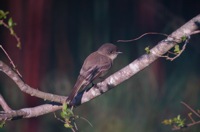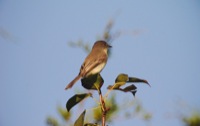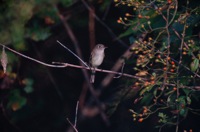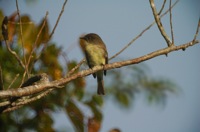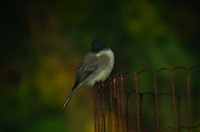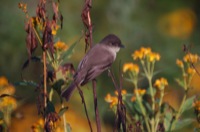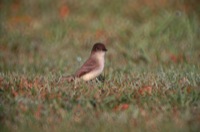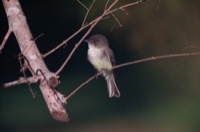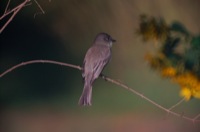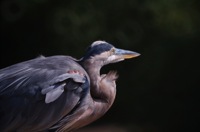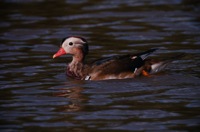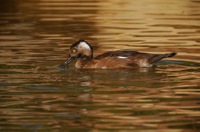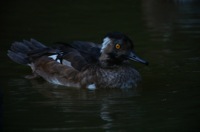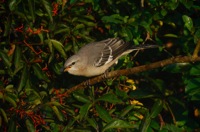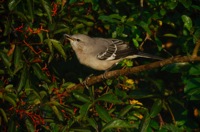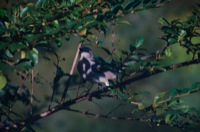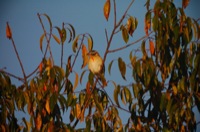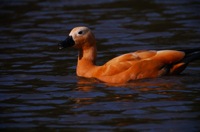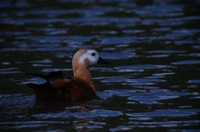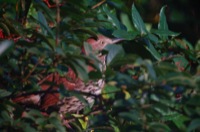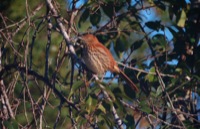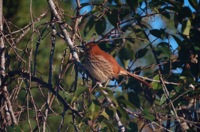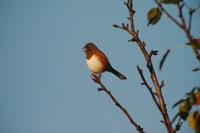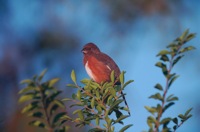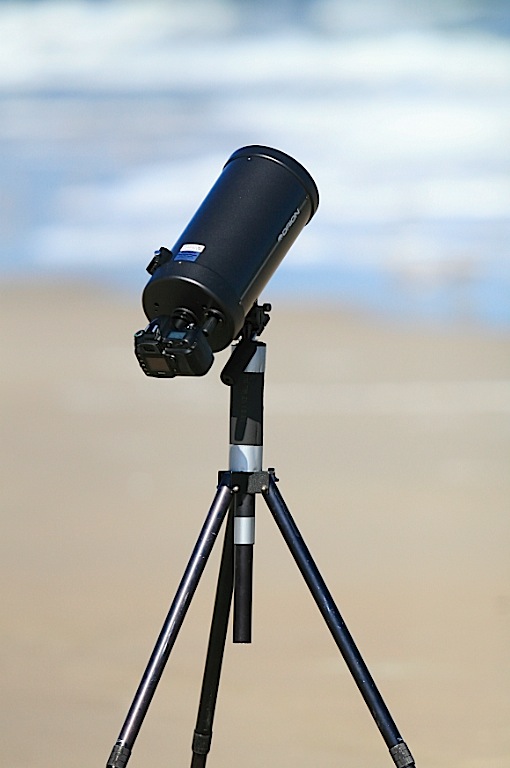Big Freakin Lens
Me with the Big Freakin Lens -- a 6-inch
Maksutov-Cassegrain
astronomical telescope
attached to a Nikon D50
digital camera.
These photos
were all taken with the Big Freakin Lens:
(click
to zoom)
Frequently Asked
Questions
I have gotten many, many questions
regarding the Big Freakin Lens,
both in the field from curious passers-by and from visitors to this web
site. Below are some of the questions I've received, along with
my usual answers.
1. That lens is huge! Is it really an astronomical telescope?!?
Yes,
it's really an astronomical
telescope -- a 150mm Maksutov-Cassegrain telescope, to be
precise. This particular model is sold by a company named Orion, which is a major optics
provider, and a very reputable one at that. My unit was
manufactured in China and is stamped with the ORION logo, though
previously this model was manufactured in Russia. I have used
this scope for long-distance observation of Bald
Eagles nesting in North Carolina. Because it performed superbly for
this terrestrial viewing task I decided to try using it for general
bird photography.
2. But why use an astronomical
telescope for bird photography?!? Why not just use a
"real" photographic lens like the ones sold by Canon and Nikon?
The
reason is simple: cost effectiveness. When attached to a normal SLR
camera, this Maksutov telescope acts as an 1800mm f/12 lens. To achieve
a comparable focal length (i.e., magnification) using a Canon EF lens
I'd have to purchase a 600mm f/4 prime lens and then stack a 1.4x and
2.0x teleconverter (plus appropriate extension tubes) onto it to
achieve 1680mm at f/12. The latter setup would be almost (but not
quite) as powerful as the Maksutov telescope, while having the same
aperture (f/12) and therefore roughly the same brightness. While the
Canon system may very well be sharper and offer better color rendition
(?), the above photographs show that the Maksutov can produce stunning
results when used under ideal conditions.
And the cost of the Canon system?
Roughly $8000 new (!). By comparison, the Orion is $600 new -- less
than 10% the cost of the "real" lens.
3. But can you
really hand-hold the lens like that?
I
typically don't. I almost always mount the lens on a tripod. I have
used it hand-held,
however, from inside a car while resting the mounting plate on the
window sill.
4. Hmmmm, f/12 is
really slow. How can you possibly get good photos in dim light?
I
only use this lens in bright sunlight. When the sun goes behind a
cloud I find that I have to reduce the shutter speed to 1/80 or below,
and then the quality is generally very poor due to movement of the
subject (or the observer...). On dimmer days I sometimes use the Celestron C-5 instead, which has a
slightly better f-ratio. The C-5 is another astronomical
telescope -- a Schmidt Cassegrain, to be precise. I used the
latter telescope to study a family of Bald Eagles in Washington, D.C.
for 11 years, and found the optics to be exceptional. For
photography it works very well also, though with a focal length of only
1250mm.
5. Can you use it
for birds in flight?
I've
tried, but without much success. For birds in flight I prefer a
hand-held solution, such as the Nikkor 80-400mm zoom lens, or my new
Canon 300mm f/2.8 prime lens plus a 1.4x or 2.0x teleconverter, for an
effective focal length of 420mm or 600mm. Both of these lenses feature
image stabilization (IS), which is very useful for action shots, such
as of birds in flight.
6. Isn't a big thing
like that heavy to lug around?
The
6-inch Maksutov is about 8 lbs., or 14 lbs. with the tripod. I've
wrapped some rubber pipe insulation around the tripod, so it's not too
uncomfortable to sling over my shoulder and walk around with it for
moderate distances. For longer-distance hikes I sometimes take
the C-5 instead, since it's only 6 lbs., which rivals my 300mm Canon EF
lens.
7. Sounds pretty good!
It's
all relative. If you don't have $8000 for a "real" Canon or
Nikon lens, the Orion (or comparable alternative) can give excellent
results at a far smaller expense. A "real" $8000 lens would
probably be sharper, though at the current resolution of digital SLR
cameras it's debatable how much of that added sharpness would translate
into improved image quality. Also, note that this telescope is
bulky (making it potentially difficult to take onto a commercial
airliner) and it isn't airtight (dust can and will get into the
interior of the lens when you remove the lenscap to attach the
camera). Also, because this lens wasn't designed for use with
cameras, there is no support for auto-focus nor auto-exposure, so
everything must be set manually on the camera. I generally shoot one
"test" photo of each subject, look at the resulting image on the
camera's LCD screen, and adjust the shutter speed accordingly before
commencing with the next series of shots.
On a more positive note, for the money you'd spend on a "real" lens you
could buy no fewer than 13 Orion 150mm Maksutov
telescopes...quite an arsenal!!
Happy
shooting!
~Bill Majoros



